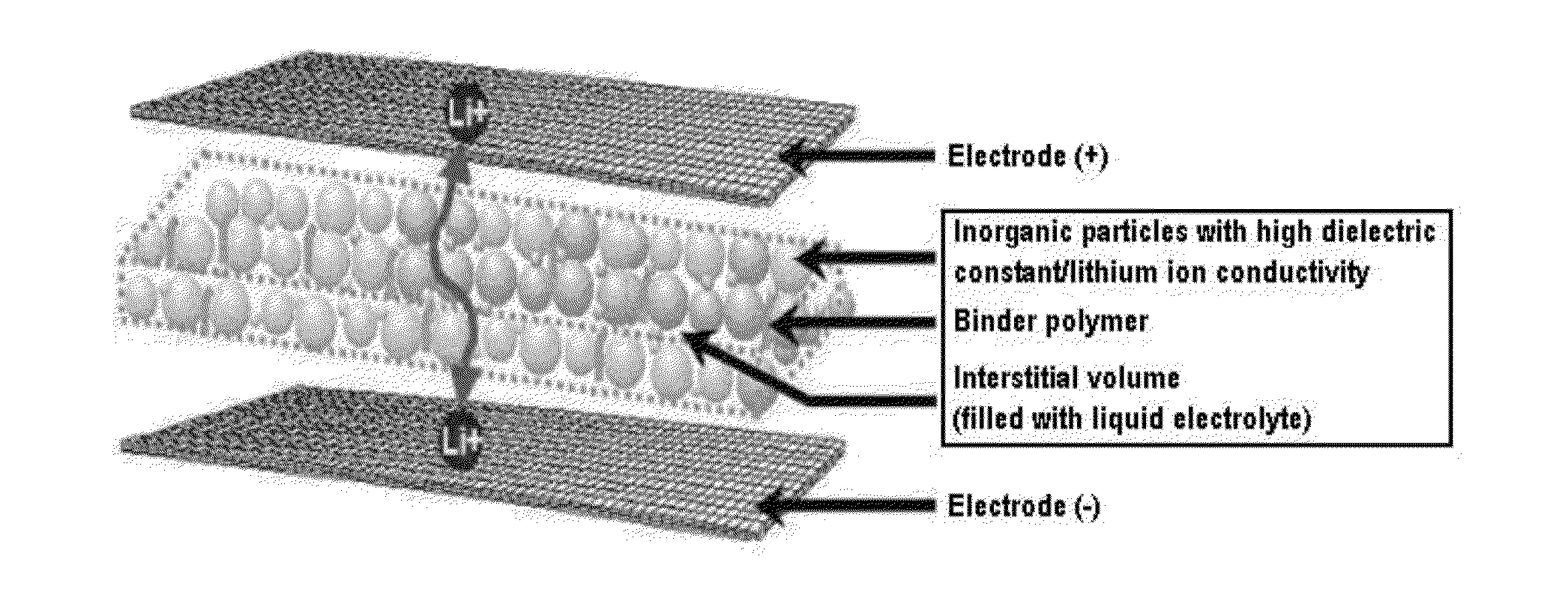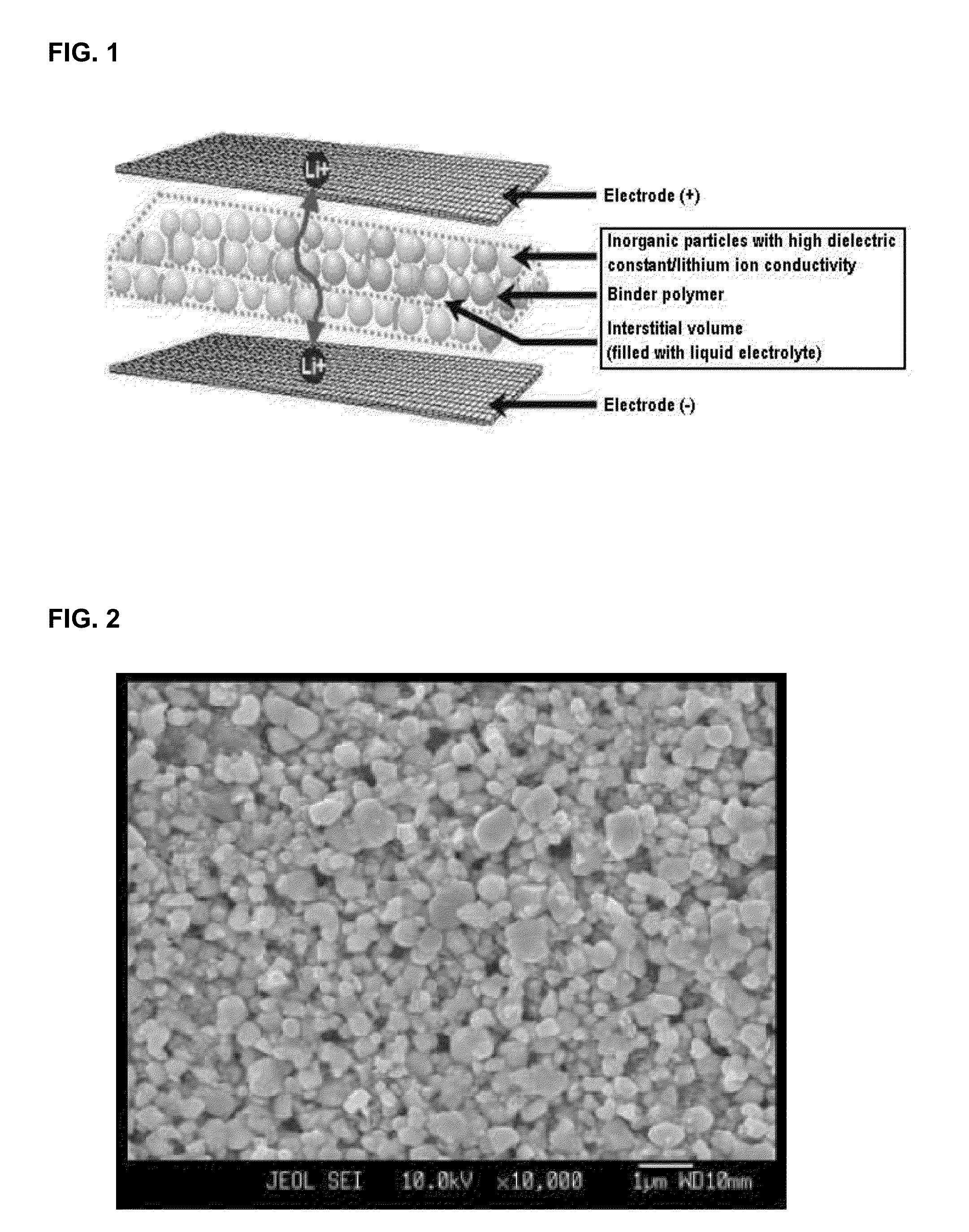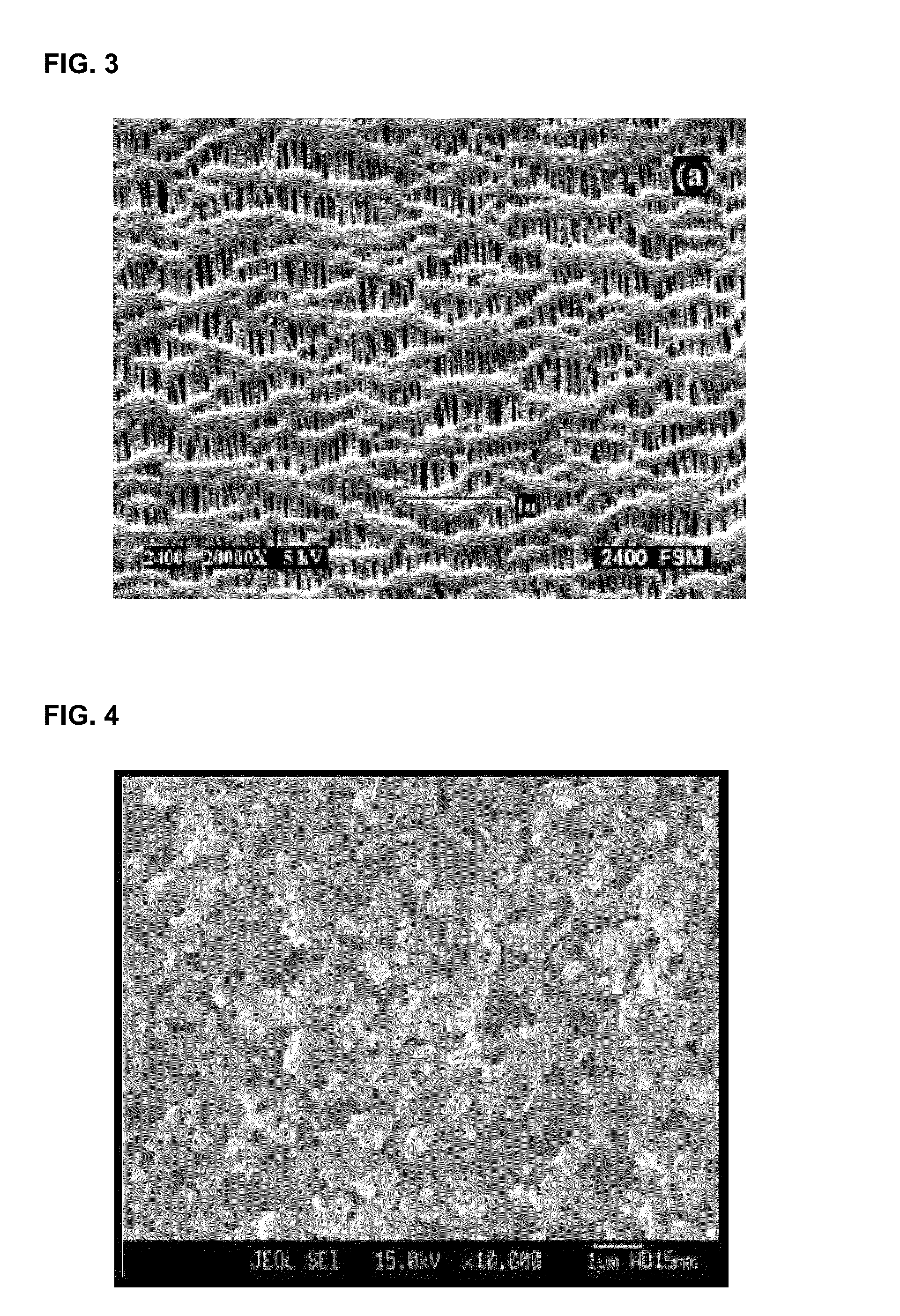Lithium secondary battery
a secondary battery and lithium battery technology, applied in the field of lithium secondary batteries, can solve the problems of poor inadvisable composite electrolytes, and strict restrictions on battery safety in terms of ignition and combustion, etc., to achieve the effect of improving the degree of swelling, improving the thermal safety of a conventional polyolefin-based separator, and increasing the volume of spa
- Summary
- Abstract
- Description
- Claims
- Application Information
AI Technical Summary
Benefits of technology
Problems solved by technology
Method used
Image
Examples
example 1-9
Preparation of Organic / Inorganic Composite Porous Film and Manufacture of Lithium Secondary Battery Using the Same
example 1
1-1. Preparation of Organic / Inorganic Composite Porous Film (PVdF-HFP / BaTiO3)
[0148]PVdF-HFP polymer (polyvinylidene fluoride-hexafluoropropylene copolymer) was added to tetrahydrofuran (THF) in the amount of about 5 wt % and dissolved therein at 50° C. for about 12 hours or more to form a polymer solution. To the polymer solution obtained as described above, BaTiO3 powder having a particle diameter of about 400 nm was added with the concentration of 20 wt % on the total solid content basis, and then dispersed to form a mixed solution (BaTiO3 / PVDF-HFP=80:20 (weight ratio)). Then, the mixed solution obtained as described above was coated on a Teflon sheet by using a doctor blade coating method. After coating, THF was dried and the Teflon sheet was detached to obtain a final organic / inorganic composite porous film (see, FIG. 1). The final film had a thickness of about 30 μm. After measuring with a porosimeter, the final organic / inorganic composite porous film had a pore size of 0.4 μm ...
example 2
[0155]Example 1 was repeated to provide a lithium secondary battery, except that mixed powder of BaTiO3 and Al2O3 (weight ratio=20:80) was used instead of BaTiO3 powder to obtain an organic / inorganic composite porous film (PVdF-HFP / BaTiO3—Al2O3). After measuring with a porosimeter, the final organic / inorganic composite porous film had a thickness of 25 μm, pore size of 0.3 μm and a porosity of 57%.
PUM
| Property | Measurement | Unit |
|---|---|---|
| dielectric constant | aaaaa | aaaaa |
| size | aaaaa | aaaaa |
| size | aaaaa | aaaaa |
Abstract
Description
Claims
Application Information
 Login to View More
Login to View More - R&D
- Intellectual Property
- Life Sciences
- Materials
- Tech Scout
- Unparalleled Data Quality
- Higher Quality Content
- 60% Fewer Hallucinations
Browse by: Latest US Patents, China's latest patents, Technical Efficacy Thesaurus, Application Domain, Technology Topic, Popular Technical Reports.
© 2025 PatSnap. All rights reserved.Legal|Privacy policy|Modern Slavery Act Transparency Statement|Sitemap|About US| Contact US: help@patsnap.com



